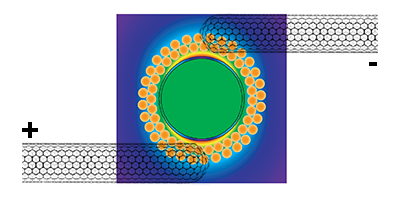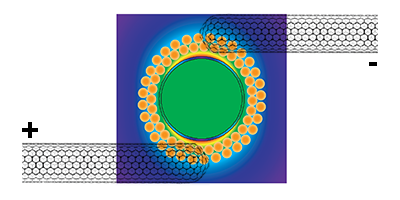Can Spasers go Electric?
Spasers (short for surface plasmon amplification by stimulated emission of radiation) are the nanoplasmonic analogs of lasers: instead of photons, spasers generate coherent surface plasmons (collective electron oscillations at the surface of a metal) in a resonant nanoparticle. Heralded as ideal sources of coherent optical fields at the nanoscale, spasers could be combined with electronics on a chip and, as argued by some, might even replace conventional transistors, being just as small but times faster.
To allow integration with electronics, a crucial development would be the realization of a spaser pumped by electrical currents, rather than by the bulkier lasers used thus far. But recent theoretical papers have argued that electrically driven nanospasers would require unrealistically high currents. Now, writing in Physical Review Letters, Dabing Li at the Changchun Institute of Optics, Fine Mechanics and Physics of the Chinese Academy of Sciences, and Mark Stockman at Georgia State University in Atlanta present a theoretical proposal for a nanospaser device that is pumped electrically via a nanowire.
The authors study a scheme in which the spaser core is a nanoparticle made of gold, silver, or aluminum. They analyze the spaser behavior, calculating the threshold for “spasing” (in analogy with lasing, spasing occurs when gain is sufficient to overcome the losses), the currents required for reaching this threshold, and the number of quanta generated above the threshold. The results suggest that, with proper materials choice, electrical pumping would be feasible.
Compared with previous work, the key novelty of the authors’ approach is that electron transport occurs in a fully quantum, rather than classical, regime. The ball falls now in the court of experimentalists to prove whether quantum effects hold the key to this promising technology. – Matteo Rini





